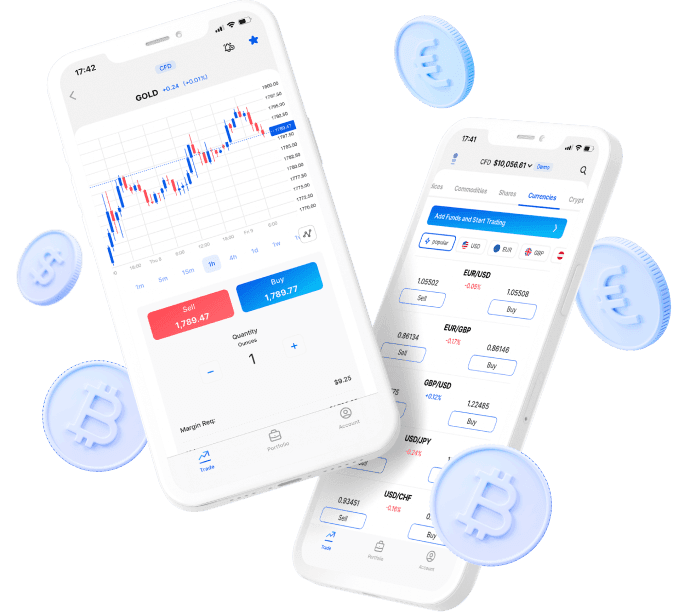Friday May 19 2023 09:19

7 min

A bearish market is characterized by declining prices and negative sentiment. In a bearish market, the overall trend of the stock market is downward, with prices of stocks and other financial assets falling over an extended period. The term "bearish" comes from the analogy of a bear, as the animal tends to push its prey down, indicating a downward trend. Bearish markets can last for varying periods, depending on the underlying factors that drive the negative sentiment.
The bullish and bearish markets are two sides of the same coin, and they represent opposite market sentiments. A bullish market is characterized by increasing prices and positive sentiment, with investors being optimistic about the future of the market. Conversely, a bearish market is characterized by decreasing prices and negative sentiment, with investors being pessimistic about the future of the market. While the bullish market is associated with the "bull," the bearish market is associated with the "bear."
Bearish markets can be identified by several key indicators, such as bearish divergence, bearish candlestick patterns, and bearish chart patterns. These indicators signal a potential downward trend in the market, which can result in lower prices and negative investor sentiment. Bearish divergence occurs when the price of an asset moves in the opposite direction of an indicator, indicating a weakening trend. Bearish candlestick patterns, such as the shooting star or engulfing pattern, suggest a potential reversal in the market. Bearish chart patterns, such as the head and shoulders pattern, also signal a potential trend reversal. Let's explore some of these indicators in detail.
Bearish divergence is a technical indicator that signifies a potential trend reversal in the market. It occurs when the price of the stock or asset is rising, but the momentum is declining. This divergence indicates that the upward trend is losing strength and could reverse, leading to a bearish market. Similarly, hidden bearish divergence is when the price of the asset is decreasing, but the momentum is increasing, indicating a potential upward trend.
Bearish candlestick patterns are technical indicators that signify a potential trend reversal in the market. A bearish candlestick pattern occurs when the opening price is higher than the closing price, indicating a potential downward trend. For example, a bearish engulfing candle occurs when a small bullish candle is followed by a large bearish candle. This pattern indicates that the bears have taken control, and a potential downward trend may occur. Similarly, a bearish flag pattern occurs when the price of the asset experiences a sharp decline, followed by a short-term price consolidation before continuing the downward trend.


Join the 100.000s that have made markets.com their home for trading. Learn about trading as you grow your portfolio.
More power in our platforms
We currently cannot accept clients from your country. If you have received this message in error, please contact our support team at support@markets.com.
Contact SupportBearish chart patterns are technical indicators that signify a potential trend reversal in the market. These patterns occur when the price of the asset is declining, indicating a potential downward trend. For example, the head and shoulders pattern occur when the price of the asset forms a peak, followed by a higher peak, and then a lower peak. This pattern indicates that the bears have taken control, and a potential downward trend may occur.

The duration of a bearish market can vary widely, depending on the underlying factors that drive the negative sentiment. In some cases, a bearish market may last for a few weeks, while in other cases, it may last for several years. The factors that contribute to the duration of a bearish market include economic indicators such as GDP growth, inflation, and unemployment rates, as well as political and social events.
For example, the Great Recession of 2008 lasted for over a year and was caused by a combination of factors, including the housing market collapse, the subprime mortgage crisis, and the banking industry's failures. Similarly, the COVID-19 pandemic caused a significant bearish market in early 2020, with the S&P 500 experiencing its fastest decline into a bear market in history. The duration of this bearish market was influenced by the severity of the pandemic, government response, and economic policies.

In a bearish market, investors may use various option strategies to benefit from the downward trend. Some popular bearish option strategies include buying put options, short selling, and bear call spreads.
Buying put options allows investors to profit from a bearish market by purchasing the right to sell the underlying asset at a predetermined price, known as the strike price, before the expiration date. Short selling involves borrowing shares of a stock and selling them in the hope of buying them back at a lower price to make a profit. Finally, a bear call spread is an option strategy that involves selling call options at a higher strike price while simultaneously buying call options at a lower strike price. This strategy allows investors to benefit from a bearish market while limiting their potential losses.
In summary, A bearish market is a situation where investors have a negative sentiment about the future of the market, leading to declining prices. This can be caused by a variety of factors, such as poor economic performance, political instability, or negative news about specific industries or companies. To identify a bearish market, investors often look for various market indicators, including bearish divergence, bearish candlestick patterns, and bearish chart patterns. These signals suggest a potential trend reversal, indicating that the market may continue to decline in the future.
The duration of a bearish market can vary widely, and it is often difficult to predict when the market will recover. However, investors can use various option strategies, such as buying put options and short selling, to benefit from a bearish market while limiting their potential losses. Buying put options allows investors to profit from a bearish market by betting on a decline in the price of a particular stock or index. Short selling, on the other hand, involves borrowing stocks and selling them with the hope of buying them back at a lower price in the future, thus earning a profit.
Asset List
View Full ListLatest
View all
Wednesday, 2 April 2025

6 min

Tuesday, 1 April 2025

5 min

Tuesday, 1 April 2025

6 min